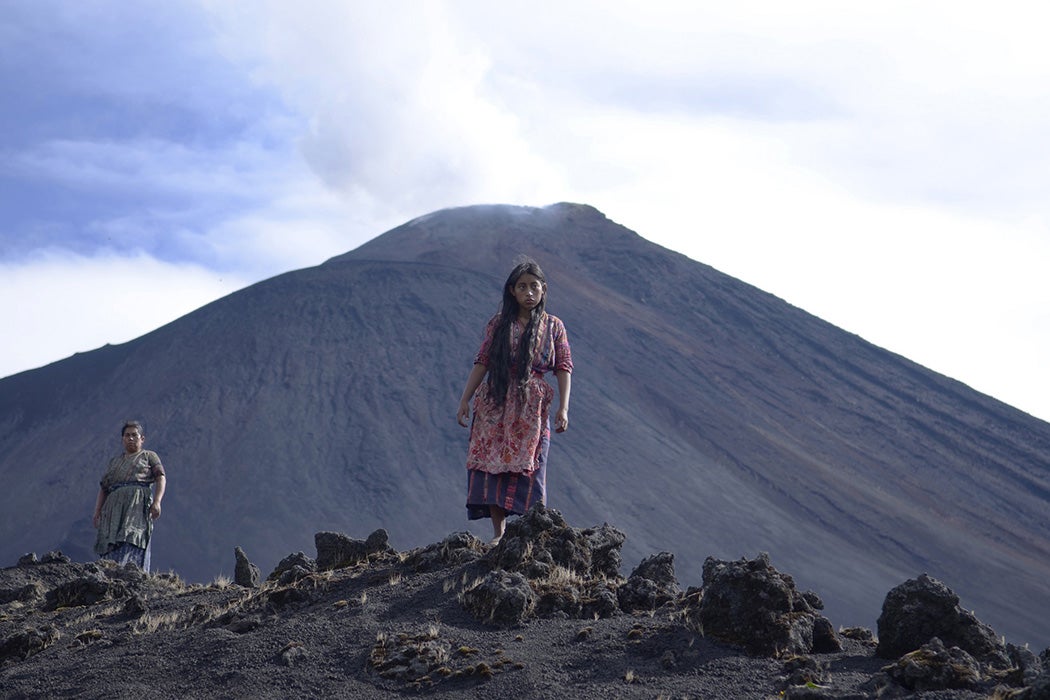In her seminal but untranslated 2005 study La pantalla rota: Cien años de cine en Centroamérica, the Costa Rican film scholar María Lourdes Cortés referred to Central American film as “perhaps one of the least known and invisible in world cinema.” Her claim was justified; during the entirety of the 1990s, the region—with over 100 million inhabitants distributed across 200,000 square miles—produced a single feature that was known internationally: El silencio de Neto, directed by Guatemalan filmmaker Luis Argueta.
Fortunately, cinema from the region has come a long way since then, as Mauricio Espinoza and Jared List explain in The Rise of Central American Film in the Twenty-First Century, now out from the University of Florida Press and included among titles in JSTOR’s Path to Open pilot program. Between 2000 and 2017, Belize, Costa Rica, El Salvador, Guatemala, Honduras, Nicaragua, and Panama collectively produced over 200 features and documentaries. “While this may seem like a low number compared to larger, more established Latin American film industries in countries such as Mexico or Argentina,” the authors write in their introductory chapter, “it represents a giant leap considering the state of the region’s filmmaking in the late twentieth century.”
The Rise of Central American Film consists of fourteen essays by a group of scholars whose contributions are arranged thematically, with sections centering on memory, movement, identity, and representation. Both Tomás Arce Mairena and Lilia García Torres, for instance, examine how film preserves—or warps—the legacy of war, revolution, and political oppression, while Arno Jacob Argueta and Jennifer Carolina Gómez’ Menjívar dissect films about race and gender discrimination. For their part, Espinoza and List, associate professors—respectively—of Spanish and Latin American literature and cultural studies at University of Cincinnati and Spanish at Doane University criticize the notion of a “Nuevo Cine Centroamericano.” They argue that “recent cinematic production might be better characterized as a new phase in the region’s path toward consolidation and professionalization of its film industry.” While contemporary directors like Guatemala’s Jayro Bustamante have access to new technologies and distribution channels that their twentieth century predecessors did not, their style and subject matter remains heavily informed by the region’s revolutionary past, which—as Espinoza discusses in the following interview— imparted a lasting interest in the portrayal of socioeconomic realities. For many a Central American filmmaker, film is neither a form of entertainment nor a vehicle for abstract philosophizing; rather, it’s a tool to examine society, expose corruption, and—ideally— outline a path towards a better future. This conversation has been condensed and edited for clarity.
Path to Open Books on JSTOR
Tim Brinkoff: Central American film has been called “one of the least known and invisible in world cinema.” What accounts for this invisibility, and what’s necessary for the world to take notice of the region’s vibrant cinematic culture the way it has now taken note of, say, South Korea’s?
Editors Mauricio Espinoza and Jared List: A key factor is output. In the book, we talk about the limited number of movies made and the limited reach those movies have. Both have increased significantly in the past twenty years, and especially in the past five. Before that, this was not the case.
Researchers have documented how poor the infrastructure for Central American film industries was in the twentieth century in terms of government support, training opportunities, and the availability of film schools. As a result, little attention was paid to Central American film in world cinema.
I teach an intro to cinema and media course, and when the textbooks touch on Latin American cinema, they only mention Mexico, Cuba, Argentina, and Brazil. That’s it. The only people who really know about Central American film are those that have traveled, have gone out of their way to look and learn. Even the Caribbean, a nearby region with similarly small populations, gets more recognition, largely because of Cuba.
Another issue is circulation. With the exception of a few Central American films that have won awards at prestigious festivals, exposure to Central American cinema has not been consistent enough for academics and critics, let alone moviegoing audiences, to truly appreciate and understand films from the region.
And it’s not just film. Literary production—and indeed cultural production in general—has traditionally only been noticed because of some crisis, something negative that catches the attention of international news, like the Sandinista Revolution in Nicaragua. It’s symptomatic of how the world perceives Central America, which only hits the spotlight when something explosive—literally explosive—is going on: drug violence, gang violence, mass migration.
Central American filmmakers are interested in social issues. Would you say Central American audiences are, too?
We’re talking about an industry that’s ultimately a form of entertainment. All around the world, audiences are more interested in entertainment than social issues and we see that in Central America as well.
The Central American films that have drawn the highest number of viewers, the few to have recovered their investment, have tended to be comedies, dramas, romances, musicals—movies with light topics. Films with more serious topics, like migration or war, were met with mixed reception. Some have seen relative success, but most of the interest comes from outside the region, from Europe, the US, and other places. From festivals and academic institutions.
Some directors from Central America have even said they make movies with international audiences in mind, for funding and distribution purposes. The exception is someone like Jayro Bustamante, from Guatemala. He made La Llorona, a horror film that—though it’s about a taboo topic, the genocide of Indigenous peoples—was a hit in his own country, perhaps because of its supernatural elements, which draw from Hollywood tropes.
Central America was and remains wrought with political instability and uncertainty. How will ongoing developments in countries like El Salvador, where President Nayib Bukele has recently broken term limits to remain in power, affect the film scene?
El Salvador’s industry has historically not been as strong as in Guatemala, Panama, or Costa Rica, the three countries whose industries have seen the most national and international success, infrastructural development, and government and institutional support.
El Salvador does not have any of that. Most of the movies coming out of this country have been dominated by a few directors who have dealt with subjects like historical memory, war, civil war, trauma, migration, gender violence, drug trafficking. But those directors have operated on the outside—in Mexico and other countries.
I guess it would come down to how the Bukele administration views the importance of cinema and its role in their national project: how film can influence the way the government is perceived. That’s something Bukele is concerned with; he wants to project the image of a new El Salvador, through tourism, the construction of a new national library, through culture and knowledge.
Film has been used by Central American governments on both the Left and the Right, either as a propaganda machine or to shape national identity. Costa Rica, for example, has financed film production to make the country known overseas, boosting tourism and foreign investment. Perhaps El Salvador will follow. Or we will stick to the same trajectory we have right now: of independent directors and producers working mostly across the border, in other countries.
Central America has a rich and vibrant tradition of documentary filmmaking. Where does this tradition come from, and do you think it has influenced the way that filmmakers in the region approach narrative film, which deals with many similar themes and also seeks to portray reality in an authentic, realistic manner?
First and foremost, it comes from necessity. It’s more expensive to make a narrative film than it is to make a documentary. Documentary was a format that allowed filmmakers to produce on a shoestring budget without having to find and pay actors and make sets and props.
At the same time, it comes from the legacy of a socially conscious generation of filmmakers that emerged in the 1960s. Their political beliefs called for a transformative kind of filmmaking. Although these individuals experimented with fiction and narrative film, documentary—or a hybrid between documentary and narrative—was the preferred genre because it was more realistic in how it documented the suffering of people, their socioeconomic conditions.
Filmmakers in Nicaragua, during the Sandinista Revolution, took inspiration from the model that Cuba had implemented years earlier and received support from Cuban filmmakers. To them, film was a tool of education, for telling the stories about the revolution, for revealing the inequalities revolutionaries were fighting and—later on—for celebrating their own achievements.
Today this tradition of documentary filmmaking remains because, after the Cold War, a lot of the production from this time period was revisited by a new generation of filmmakers trying to make sense of the past they experienced as children, like Mercedes Moncada from Nicaragua. They combined fact with fiction, and interviewed the survivors of wars and war crimes.
A lot of people active in Central American film are women, which is interesting because Central American societies are overall quite patriarchal. How did this come about?
Women are involved in Central American film as directors, producers, or academics studying film. They also organize film festivals, manage funds, and lead institutes.
While we consider many of the socialist revolutions as failed attempts at creating a different, utopian future, the truth is that they did have an impact. Though not all of their ideas ended up materializing, they did have a lasting influence on society, politics, and the arts.
We see this in the number of female presidents Central America has had since 1990, Nicaragua being the first. Today, some governments have even implemented affirmative action approaches to increase the number of women in politics. Think of Costa Rica establishing a rule that there needs to be at least one woman vice president in every party.
The same goes for education. If you look at universities—I don’t have the data for all Central American countries—but in Costa Rica, there are more women than men. I saw that growing up there; there were more women than men in my graduating class.
This doesn’t mean there is complete equality in the film industry. It’s still difficult for women to work on big, commercial films, for example. These are still produced mainly by men, so there is a disconnect there in terms of resources and compensation.
Then there’s the question of what roles women have in films. Bustamante has been pretty good in this regard—most of his films have a strong woman at their center. Others, not so much. Films by women tend to also have female protagonists, characters that struggle with and rebel against patriarchal society while figuring out their place in the world.
Take, for example, Violeta al fin, a 2017 film by Costa Rican director Hilda Hidalgo, about an older woman trying to get a divorce in a traditional and religious society. It’s not just that these directors are women, which is in itself an advancement, but also that they tell stories about nuanced characters who are women.
The leaders of the Panama Film Festivals are women, which is important, because they decide what’s being shown and where the funding goes. Film scholar María Lourdes Cortés has been the director of a fund called Cinergia for years, providing seed money for many successful directors from the previous decades.
The relationship between art and activism is hotly debated all around the world. To what extent have Central American films—documentary or fiction—inspired concrete social change?
The films by Mercedes Moncada, like Palabras mágicas (Para romper un encantamiento), and Gloria Carrión’s Pantasma—both of them children of the Sandinista Revolution, daughters of revolutionaries—have become quite unpopular with the current administration of Nicaragua. Both filmmakers now work outside the country. They couldn’t do what they are doing now if they remained in Nicaragua. The same goes for writers like Gioconda Belli and Sergio Ramirez.
Many activists and intellectuals have had to leave Nicaragua in the past few years, especially when things got worse in 2017-2018, with protests. These movies, that’s what they do: they try to dissect what went wrong with the promise of the revolution, the hypocrisy of revolutionary leaders that moved in practical terms to the right but still try to preserve the ghostly presence of a leftist revolution that does not exist anymore.
Tatiana Huezo is making films in Mexico about drug cartels and drug trafficking and their effect on women. Such sensitive, difficult topics make her a target. It’s dangerous work. It gets people killed, kicked out of their countries, or threatened.
These filmmakers know they are getting into risky business. Making films, whether fiction or documentary, is pushing against serious realities. It’s activist work in itself.
Indigenous peoples remain marginalized throughout much of Latin America. To what extent has Central American cinema depicted them as subjects as opposed to objects, the way they had often previously been portrayed?
There is still a deficit, but I think the representation of Indigenous stories and actors have been an important part of the resurgence of Central American film. Before, there was very little inclusion. If there was, it was almost always through an anthropological lens.
Bustamante’s Ixcanul (Volcano), about a Mayan girl who awaits an arranged marriage, was spoken completely in Kaqchikel. This was a gutsy decision for his first feature. It’s already tough to have a film succeed with audiences as is. Now you’re making one that’s not even in Spanish; unless you’re from that community, you’ll have to depend on subtitles. It’s completely about an Indigenous population’s story, their worldview and political issues.
Fortunately it was successful, especially abroad, which indicates that inclusion of Indigenous stories and actors is profitable in addition to being a right of fair representation, especially in a place like Guatemala where 40% is Indigenous. It’s not that much of a minority.
In literature, there has been this new wave of Indigenous writers writing in their native languages, publishing bilingual editions. I think film is the next area where we will start to see not just mestizo, white directors like Bustamante representing Indigenous populations, but also Indigenous directors doing that kind of work.
Of course, it’s much more expensive to produce a film—even a short film or a documentary— than it is to write a poetry book.
Support JSTOR Daily! Join our membership program on Patreon today.





